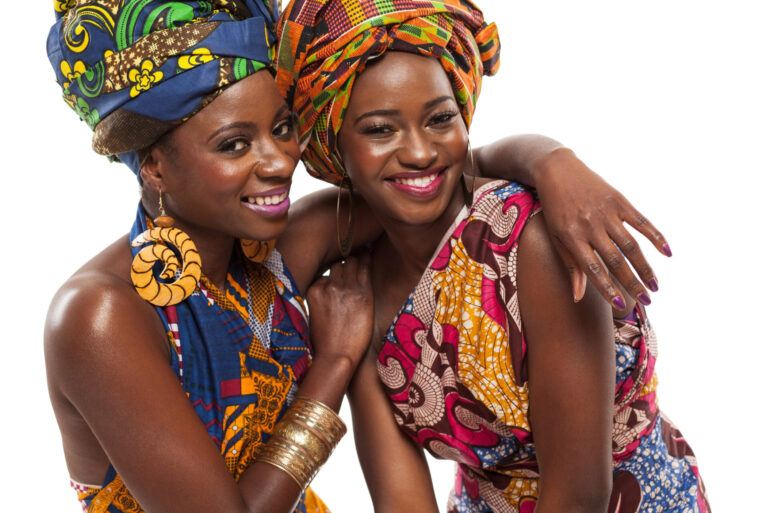Black History Month is an annual observance in the United States and the United Kingdom, where the history, achievements, and contributions of Black people are celebrated. This year, as part of the celebrations, we will highlight some of the most influential Black British artists of our time.
Yinka Shonibare MBE
Yinka Shonibare MBE is a Nigerian-British artist best known for exploring colonialism, race, and identity themes. Born in London in 1962 and raised in Lagos, Nigeria, Shonibare has used his art to challenge stereotypes and create a nuanced representation of the African diaspora.
Shonibare’s signature material is the brightly colored, African-style batik fabric he employs in his sculptures, installations, and photographs. His works are often large-scale and thought-provoking, exploring the intersections of race, class, and cultural identity.
Some of Shonibare’s most famous works include his life-size installation, “Nelson’s Ship in a Bottle,” which was displayed in London’s Trafalgar Square, and “The Ballroom Scene,” a re-creation of a 19th-century ballroom scene in which the figures are dressed in elaborate costumes made from the batik fabric.
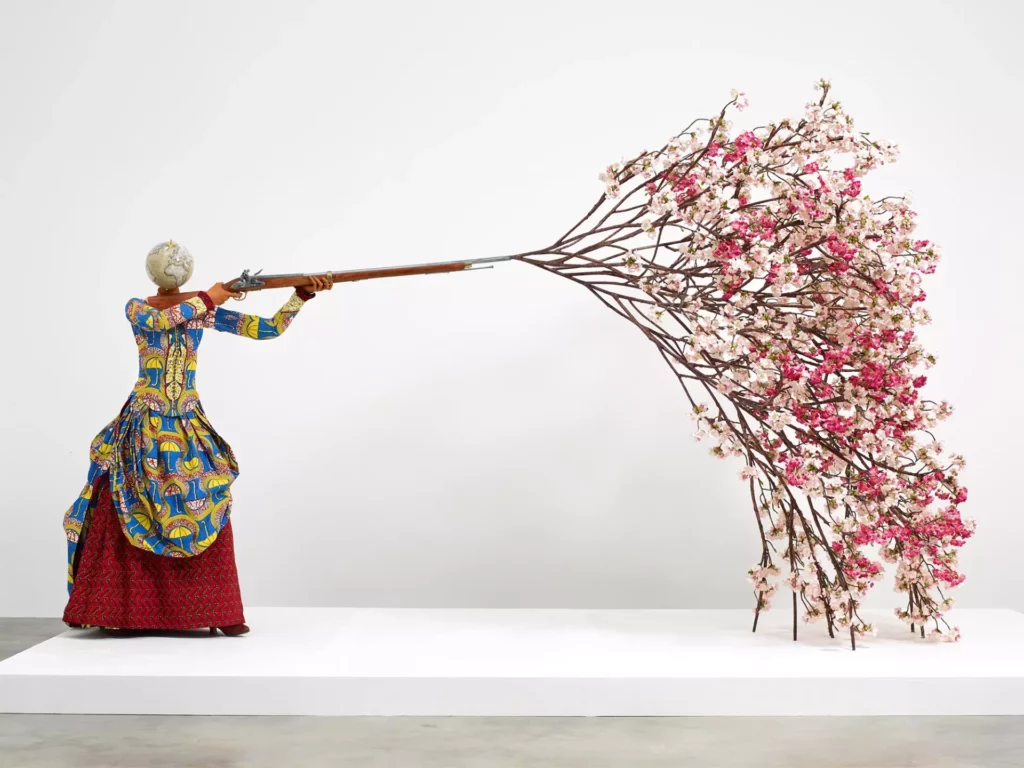
Lynette Yiadom-Boakye
Lynette Yiadom-Boakye is a Ghanaian-British painter who has gained international recognition for her stunning portraits. Born in London in 1977, Yiadom-Boakye has developed a unique style that blends traditional portraiture with contemporary techniques, simultaneously creating classic and modern works.
Yiadom-Boakye’s portraits are inspired by people she has encountered in her daily life and by her imagination. Her works often depict Black subjects and are known for their rich color palettes, dynamic compositions, and subtle explorations of race and identity.
Her works have been displayed in numerous exhibitions and galleries worldwide, and she was awarded the Turner Prize in 2013, becoming the first person of color to receive this prestigious award.
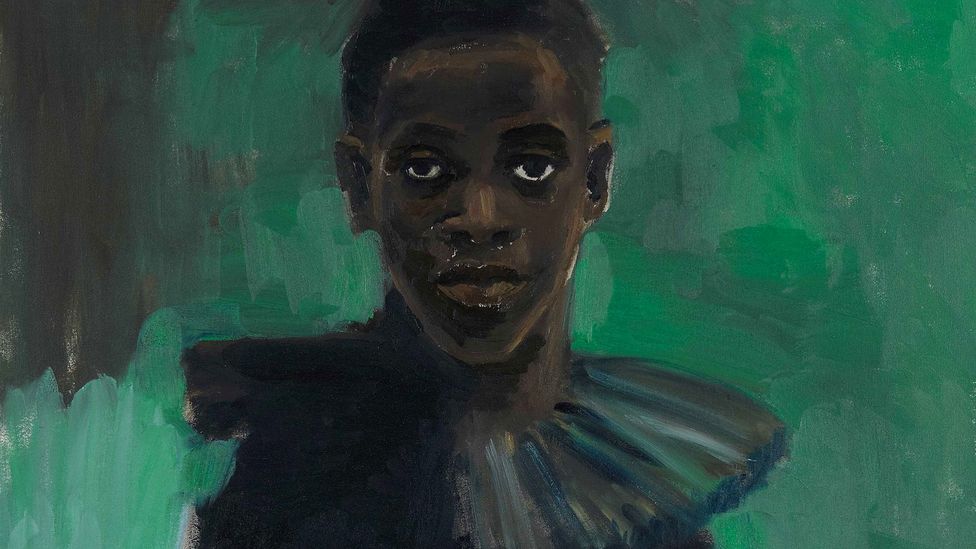
Chris Ofili
Chris Ofili is a British-Trinidadian artist widely regarded as one of the most influential artists of his generation. Born in 1968 in London, Ofili is best known for his large-scale paintings incorporating a wide range of materials, including glitter, elephant dung, and his signature medium, hand-ground oil paint.
Ofili’s works often explore themes of race, religion, and cultural identity, and his unique use of materials creates a rich visual language that is both humorous and thought-provoking. His paintings are widely recognized for their intricate details and vibrant color palettes, which create a striking visual impact.
Ofili was awarded the Turner Prize in 1998. His works have been displayed in numerous exhibitions and galleries worldwide, including the Tate Modern in London, the Guggenheim Museum in New York, and the Studio Museum in Harlem.
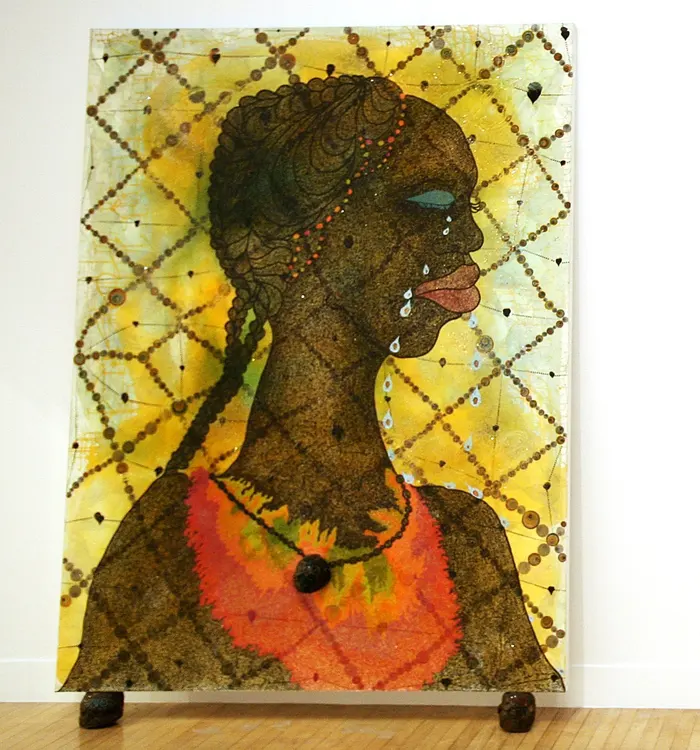
Ibrahim Mahama
Ibrahim Mahama is a Ghanaian artist best known for his large-scale installations and sculptures exploring migration, globalization, and cultural exchange. Born in Tamale, Ghana, in 1987, Mahama has become one of the most sought-after contemporary artists, creating works that challenge our perceptions of the world.
Mahama’s most famous works include his installations of jute sacks, which are often used in the transportation of goods and are a symbol of global trade and economic exchange. His works are usually large and imposing, creating unforgettable, powerful visual impact.
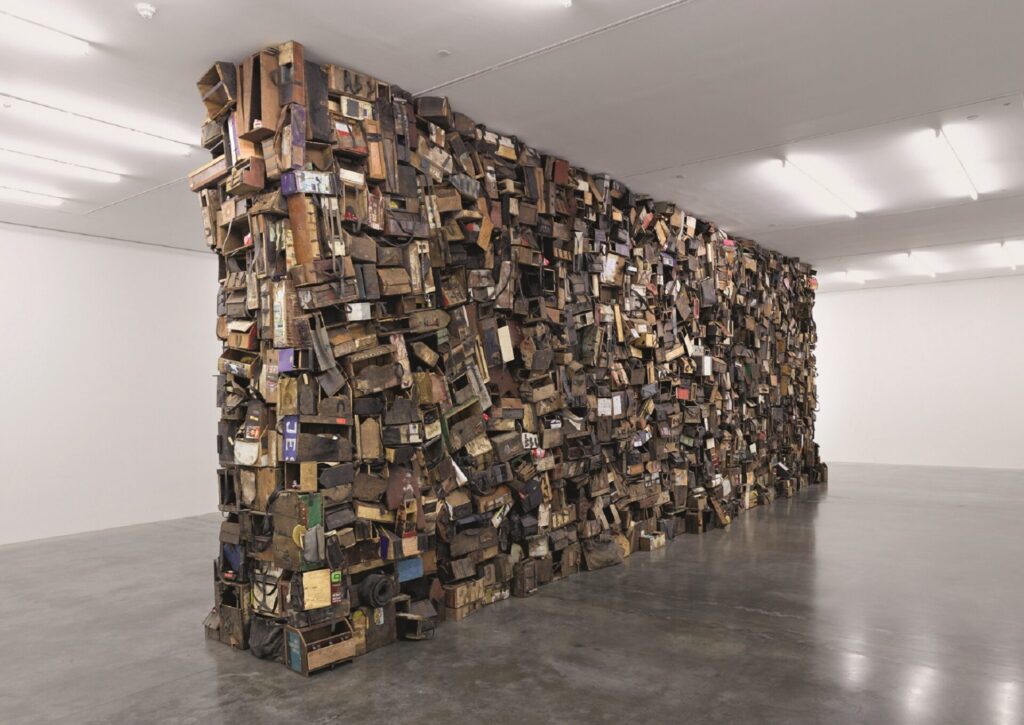
Njideka Akunyili Crosby
Njideka Akunyili Crosby is a highly celebrated Nigerian-born artist known for her masterful paintings and drawings. She has made a name for herself by exploring complex themes related to cultural identity, displacement, and the challenges of navigating two distinct cultures. Her works are noted for their incredible attention to detail and the seamless fusion of traditional Nigerian and Western art styles.
Akunyili Crosby’s paintings are characterized by their unique composition, which often features overlapping layers of images, patterns, and cultural references. Her works often depict the complexities of cross-cultural experiences and the difficulties of negotiating between two cultural identities. She explores these themes through vivid colors, intricate patterns, and bold lines that create a sense of depth and movement within the composition.
Akunyili Crosby has received numerous awards and accolades throughout her career, including being named a MacArthur Fellow in 2017. This recognition solidified her position as a leading figure in the art world and has brought her work to the attention of a global audience. Her paintings can be found in numerous prestigious collections, including the Metropolitan Museum of Art in New York, the Museum of Modern Art in San Francisco, and the Tate Modern in London, among others.
Eddie Chambers
Eddie Chambers is a British-born artist of exceptional talent and vision.
Born in 1960, Chambers has spent his career exploring the intersection of art, history, and cultural identity, making significant contributions to contemporary art.
He has significantly impacted the contemporary art world with a diverse portfolio that encompasses painting, performance, and installation. His works are known for their insightful commentary on race and cultural identity issues and his critical and politically charged approach to art.
Chambers’ paintings often reflect his experiences growing up as a person of color in Britain and how race and cultural identity have shaped his life and worldview. He uses a wide range of styles, techniques, and materials to convey these themes, from colorful abstract works to more representational pieces that address social and political issues.
In recognition of his achievements, Chambers has received numerous awards, including prestigious grants and residencies. He has also had numerous solo exhibitions, including a highly anticipated show at Tate Britain, one of the world’s most renowned modern and contemporary art institutions. Through his works, Chambers seeks to challenge the status quo and raise essential questions about the role of art in society, making him a leading figure in contemporary art.
Jenny Saville
Jenny Saville is a highly regarded British painter who has significantly impacted the contemporary art world. Her work is characterized by her robust and highly detailed paintings of the human form, which often address complex and thought-provoking themes related to gender, identity, and the body.
Saville’s works are notable for their large scale and her incredible attention to detail. She uses bold brush strokes and a range of textures to create vivid and expressive portraits that capture the physicality and emotions of her subjects. Her work often features close-up images of the human body, and she explores the relationship between the body and its surroundings and the way our bodies are perceived and judged.
Plan, painted in 1992, is one of Saville’s early works and is considered a masterpiece of her career. It features a close-up image of a fleshy female body partially obscured by flesh folds, and it explores the relationship between the body and its surroundings.
“VIII,” which she painted in 1998, features a large-scale portrait of a reclining female figure and is considered one of Saville’s most iconic works. The figure is depicted with a powerful sense of physicality and emotion, and the painting explores the themes of gender, identity, and the body.
Throughout her career, Saville has been recognized for her powerful and thought-provoking work and has had numerous solo exhibitions in leading art institutions worldwide. Her work has been displayed at the Museum of Modern Art in New York, among other prestigious institutions. She has been widely praised for her ability to create meaningful and impactful works of art.
Michaela Yearwood
Michaela Yearwood-Dan’s work often reflects her personal experiences and her exploration of her own cultural identity. She draws inspiration from her Caribbean heritage and other cultures and traditions she has encountered throughout her life. Her paintings are known for their vibrant colors and dynamic compositions, and her use of patterns and repetition creates a sense of movement and energy.
One of Yearwood-Dan’s notable works is “West African Adinkra Cloth,” which was inspired by the traditional textiles of West Africa. The work features brightly colored patterns and symbols, and its vibrant energy is meant to reflect the rich cultural heritage of West Africa. Through her use of vibrant colors and bold compositions, Yearwood-Dan creates a sense of excitement and energy in her work, and she invites the viewer to explore and appreciate the rich cultural heritage of West Africa.
Donald Rodney
Donald Rodney was known for his politically engaged and socially conscious works and was a strong voice in the Black Arts Movement. His works often address critical social and political issues, such as racism, inequality, and the legacy of colonialism. He was particularly interested in how history is remembered and represented and sought to challenge dominant narratives and perspectives in his work.
One of Rodney’s most important works is “Black People Time,” a series of paintings exploring the relationship between Black people and time. The paintings feature images of clocks and other timekeeping devices, and the work reflects Rodney’s concerns about how time is used to measure and categorize the experiences of Black people. Through imagery and color, Rodney invites the viewer to consider the relationship between Black people and time, and he challenges us to question our assumptions and beliefs about this relationship.
Keith Piper
Keith Piper is one of the pioneers of the Black Arts Movement in the United Kingdom. His work reflects his commitment to exploring and addressing important social and political issues. He is known for his innovative and socially engaged approach to art, and his works often explore themes of race, history, and cultural identity.
One of Piper’s most important works is “Recalibrating Memories,” which is an installation that explores the relationship between history, memory, and the representation of Black people. The work features a series of video projections, photographs, and sound recordings, and it invites the viewer to consider how history is remembered and represented. Through his use of multimedia, Piper creates a rich and immersive experience that encourages the viewer to consider the relationship between history, memory, and representation and to question the dominant narratives and perspectives that shape our understanding of these issues.

